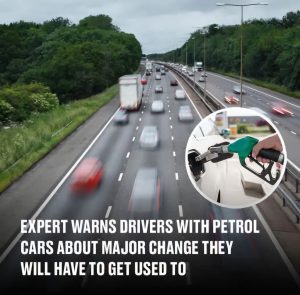The shift toward electric vehicles (EVs) is no longer something on the horizon—it’s rapidly becoming a new reality that drivers around the world must prepare for. Countries like the United Kingdom and Canada are leading the way with clear deadlines to phase out the sale of gas-powered vehicles. In the UK, new petrol and diesel cars will no longer be sold starting in 2030, while hybrid vehicles will follow five years later, in 2035. Canada has set a goal to reach 100% EV sales by 2035. While these deadlines may seem far off, experts stress that now is the time for gas car owners to start preparing for the changes ahead.

One of the first major adjustments that drivers will face is the move toward automatic transmissions. Traditional gas-powered vehicles often come with manual gearboxes, especially in European markets. In contrast, electric vehicles operate without any gears at all. This difference significantly changes the driving experience. According to Stuart Masson of The Car Expert, this evolution represents “car industry 2.0.” For those accustomed to shifting gears manually, driving an EV will require some time to adjust. However, EVs offer a smoother, more intuitive experience overall, making them appealing to new drivers and those looking for a simpler way to get around.
Another change that gas vehicle owners will have to reckon with is the gradual decline of gas stations. These facilities won’t disappear overnight, but their numbers will inevitably dwindle as the demand for gasoline drops. As EVs become more common on the roads, the need for traditional fuel stations will decrease. For people still driving gas-powered cars, this means they’ll need to be more strategic about planning their routes, particularly for longer trips. This experience may start to mirror the early years of EV ownership when charging stations were few and far between and drivers had to carefully plot out their trips to avoid being stranded.
In Canada, the government has implemented incremental EV adoption targets for automakers—20% of new sales must be electric by 2026, rising to 60% by 2030, and 100% by 2035. While existing gas-powered cars won’t be taken off the road, finding places to refuel them will gradually become less convenient. This means that even if you’re not ready to make the switch today, you’ll still feel the impact of this transformation in the years to come.
Range anxiety, the fear that an EV will run out of battery power before reaching a charging station, is still one of the biggest hesitations for many prospective EV buyers. However, experts like Masson believe that this concern is often exaggerated. He notes that the average car trip is only about nine miles, while most modern EVs can travel up to 250 miles on a single charge. That range is more than enough for everyday use, commuting, errands, and even some weekend road trips.
Interestingly, this type of anxiety may start to apply to gas car drivers as well. As fuel stations become less accessible, drivers may find themselves needing to plan fuel stops in advance, much like early EV drivers had to map out charging locations. While this won’t happen overnight, it is something that long-term gas vehicle owners should consider as the number of stations begins to decline.
To support this widespread shift to EVs, governments and private companies are ramping up investments in charging infrastructure. Canada currently has over 25,500 public charging ports across the country, and that number is projected to grow to at least 33,500 by 2026. Although the majority of these stations are located in more densely populated provinces like Quebec, Ontario, and British Columbia, there are ongoing efforts to expand access in more remote and rural regions to ensure a consistent and reliable charging network.
Governments are also offering financial incentives to make EVs more appealing and affordable. In Canada, automakers can earn credits by meeting electric vehicle production targets or by investing in public charging stations. At the consumer level, rebates and tax incentives help lower the initial purchase cost of EVs, which has traditionally been one of the major barriers to adoption. These financial perks can significantly reduce the total cost of ownership, making EVs a more accessible option for many drivers.
Still, some people may not be ready to give up their gas-powered vehicles. For them, there’s no reason to panic. According to Masson, “You’ll still be able to drive your petrol car for decades.” However, that doesn’t mean the industry isn’t changing. The momentum behind electrification is undeniable, and while individuals may choose to delay their switch to an EV, they will eventually need to adapt as infrastructure, policy, and market forces continue to evolve.
Preparing for the future means more than just buying a new type of car. It involves rethinking the way we drive, how we fuel our vehicles, and how we plan our journeys. Experts emphasize that the shift to electric won’t happen overnight, but the groundwork is already being laid. That’s why it’s essential for drivers to start educating themselves now.
Learning how EVs work, understanding the benefits and limitations of electric drivetrains, and adjusting to automatic-style driving are all key to making the transition easier. Paying attention to where charging stations are being built, watching for changes in vehicle incentives, and staying informed about local and national policies can also help drivers make smart decisions in the coming years.
The road ahead is certainly different from the one we’ve traveled for the past century. But it’s a road paved with opportunity—a chance to embrace cleaner technology, reduce emissions, and adopt a more sustainable lifestyle. The transition may bring challenges, but it also offers the promise of a better, more efficient way to get from place to place. For drivers willing to adapt and prepare now, the future of transportation holds exciting possibilities.





